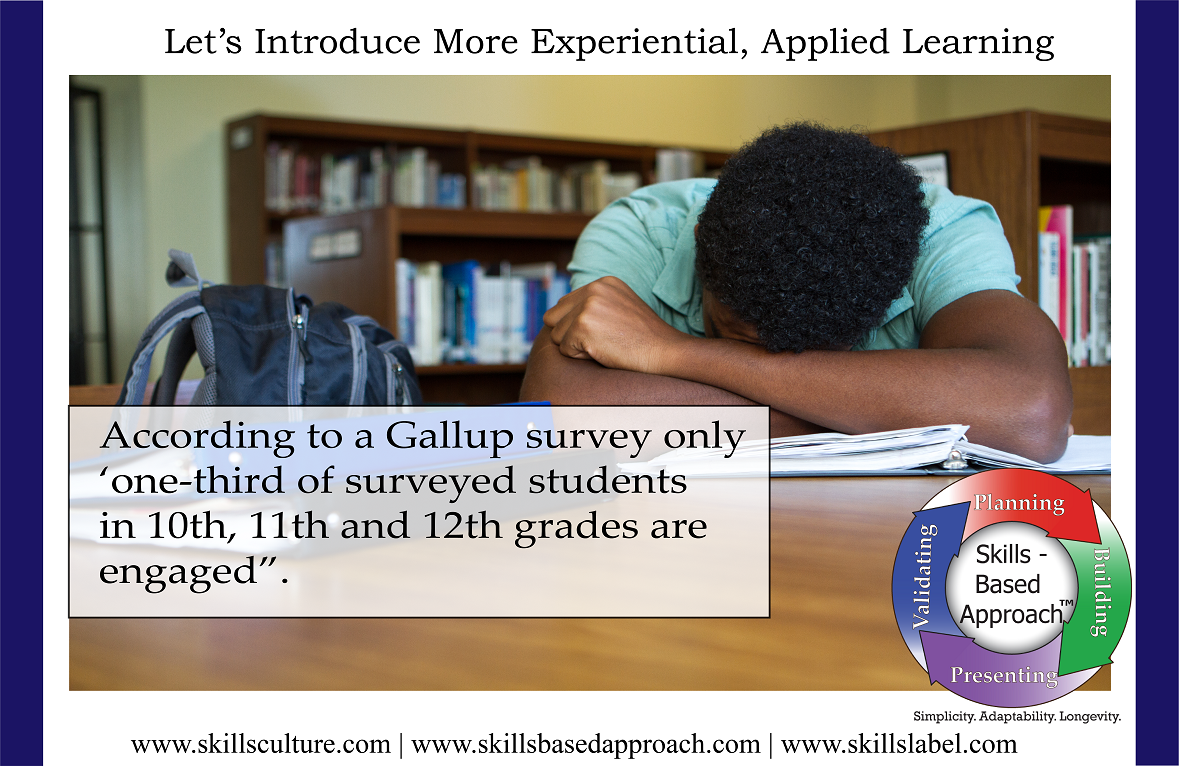Personalized learning requires a teacher / professor and a system. Good seasoned teachers get to know their students in a year, though this is not necessarily the norm. (In my experiences) professors do not get to know their students in a semester – many are also committed to advancing their research. A system brings teachers up to speed in understanding their students. The learning labels technology is meant to track students’ learning on a task / project level. Briefly looking at completed tasks and/or accomplished skill levels provides a basis to understand students, which can then lead to a personalized learning approach. Here are a few ways to do this:
Giving students choice. Whenever possible give learners (at any age) choice in how and what they learn. There are limitless ways to learn core skills, so let learners answer their own questions and be creative in how they apply what they are learning. An example would be to allow students to decide on one task from ten different options. Or let students propose a task with a hypothesis for what they expect to learn.
Informing students of learning expectations. It is worth giving students an opportunity to understand the basis of what they are learning. Suggest personal reflection after completing a task. Students who know their skills are more self-aware and capable of making learning decisions.
Putting students in the ‘driver seat’ of their learning. Encompassing the prior two points, design the technology / system with the intention of students being in control (the primary user). (For reference, alternatively, a learning management system is constructed for an institution and teachers / professors.)
Using levels of achievement rather than seat time. There are advantages for all students with competency-based learning. Underachieving students get more resources and time. Average students choose how much time and resources they want to invest – some may choose to compete at a higher level. Overachieving students move on after proving a desired competency – stay stimulated.
Creating experiences. Suggest designing experience with learning expectations in mind, though much of an experience is dynamic and free flowing. Personalize the experience based on the participants.
Skills Label TM is a system to track and manage the development of skills. The standardized display is an ideal platform to inform students of learning expectations and allow them to make a basis of comparison. Furthermore, over time, Skill Points (a proprietary calculation of a learning gain) represent a skill competency.
Skills Based Approach SM is a methodology to track tasks and stack credentials. The designed application is meant to be in the hands of a learner (not necessarily the institution).
Skills Culture SM is a growth mindset to learning. Teachers and students rally around properly learning and applying skills. This philosophy is meant to inspire and motivate a learning process based on experiential learning.
